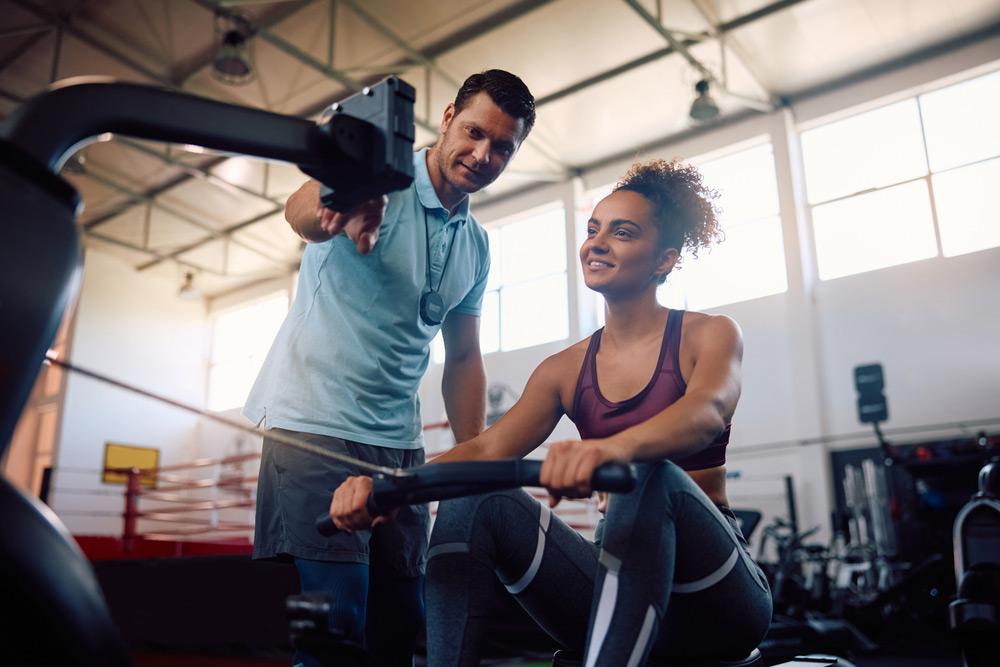 If you’ve ever tried to do any goal setting or planning for the future with your athlete, you may have struggled to help them hone in on what really matters to them. This can happen whether they’re simply trying to prepare for the upcoming softball season or debating which colleges to apply to in the fall.
If you’ve ever tried to do any goal setting or planning for the future with your athlete, you may have struggled to help them hone in on what really matters to them. This can happen whether they’re simply trying to prepare for the upcoming softball season or debating which colleges to apply to in the fall.
If asking your athlete what they want elicits a blank stare, it may be helpful to shift the question to ask your athlete what they don’t want. Here, TrueSport Expert Betsy Butterick, a coach and communication specialist, explains how to talk to your athlete about their goals and dreams, and how to reframe negatives into positive action steps.
Use what your athlete doesn’t want to find out what they do want
Setting big or small goals can be daunting for young athletes. Asking young people what they want is hard, especially if they live day to day and don’t think much about the future. But most athletes have a good grasp on what they don’t want, so in many cases, it’s better to ask about that to kick off the goal-setting discussion.
“Getting clear on what your athlete doesn’t want creates greater ease and greater accessibility to goal-setting, especially with young people,” says Butterick. “For example, a college coach that’s asking their freshman athletes about the legacy that they want to leave at the school may find that the young athletes are uncertain and struggle to come up with answers. Often, you’ll hear a lot of athletes say that they don’t know. Here, it can be beneficial if you flip the question and ask what they don’t want to be remembered for. Based on their history, whether in or out of sport, any person of any age can be very articulate and clear about what they know they don’t want based on their past negative experiences.”
For example, after asking this question, a response from a young athlete could be as simple as, “I don’t want to miss so many free throws.” It could be more generalized: An athlete may respond, “I don’t want to get to the end of the season and wonder what could have happened if I just tried harder.”
Use what they don’t want as limiters or filters
 There’s another way to use what an athlete doesn’t want when it comes to goal-setting, and that’s by using what they don’t want as filters to make a decision, which can then illuminate a goal. Here, Butterick gives the example of a young athlete struggling to pick a college or university. “If we’re talking with young people who have the desire to go to college, often, they don’t have a school in mind right away,” says Butterick.
There’s another way to use what an athlete doesn’t want when it comes to goal-setting, and that’s by using what they don’t want as filters to make a decision, which can then illuminate a goal. Here, Butterick gives the example of a young athlete struggling to pick a college or university. “If we’re talking with young people who have the desire to go to college, often, they don’t have a school in mind right away,” says Butterick.
In that case, instead of beginning with what schools your athlete wants to go to, start by narrowing the options. “Think about geography. Are there any states or parts of the country or types of weather that your athlete doesn’t want to experience? Cross those off the map,” she says. “Is there any school size that feels too big or too small? Finding out what they don’t want gets us much closer to what they do want.”
Once the list is narrowed down, it may become clear what kind of school your athlete wants to attend, and with that information, you can help them plan to have the best possible academic and athletic application.
Use what they don’t want to make a plan to avoid that situation
“When it comes to goal-setting, we talk about what we want the goal to be, and we are really specific and intentional about what actions it will take to get there, but then we don’t proactively think about what could realistically get in the way of our ability to do those things on a daily basis,” says Butterick. “Thinking through those scenarios and potential roadblocks is a really important conversation to have.”
If your athlete is already a goal-focused individual and has a plan in place for the academic year or season, help them by asking them about potential things that they don’t want to happen, things that would prevent them from achieving their goal. Once they’ve made that list, help them think through how they would navigate that problem by listing potential solutions.
“This way, when one of those things does inevitably pop up, your athlete already knows how to handle it,” Butterick explains. “They’re able to respond instead of react, and in doing so, they keep their bigger goal in the realm of reality.”
Help them reframe the negatives to positives
We know that language is important and that it can impact how an athlete feels about their goal. Because of this, it’s important to shift the negative ‘don’t want’ concepts to positive goals, rather than stopping this exercise once your athlete is clear on what they don’t want to happen.
“Once you flip the language to the positive, that can become a starting point for articulating what they do want,” Butterick says. “Coming back to the athlete who doesn’t want to end the season feeling like they could have tried harder, ask: What can the athlete do to ensure that every day, they feel like they’re giving their best effort? What’s the plan for that, and what does it look like in tangible daily actions?”
It’s important to shift a negative goal like ‘I don’t want to miss as many free throws’ to the positive version of ‘I want to make more free throws’ simply because the goal will become what your athlete is focusing on. And if they’re focusing on what they don’t want to do—missing free throws in this case—they’re actually more likely to repeat that behavior. But if they’re focusing on making more free throws, they’ll be focused on getting the ball into the net, rather than focusing on what happens if they don’t.
Additionally, the positive version of the goal—making more free throws—allows the athlete to then think through the daily actions required to make that goal possible. “From ‘I want to make more free throws,’ we can go into the conversation about the actions needed,” says Butterick. “What needs to be true and what needs to happen in order for that to become a reality? It may be that you need to practice shooting more often, or ask your coach to work with you on your form. Maybe you need to focus on a different mindset when you approach the free throw line.”
___________________
Takeaway
Often, asking your athlete what they want when it comes to goal-setting or future planning can leave an athlete feeling overwhelmed and at a loss. Instead, try asking what they don’t want, which can then be used to help them determine what is important to them. However, make sure that you also help them reframe the negatives into positive statements and goals that are SMART: Specific, Measurable, Achievable, Relevant, and Timely.



